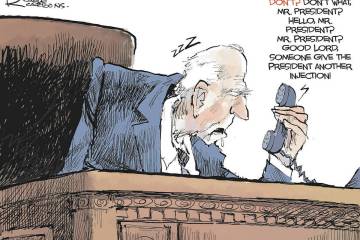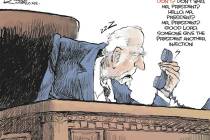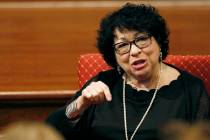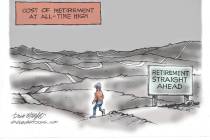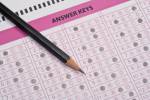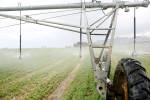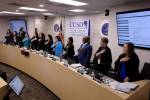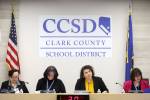COMMENTARY: Test results not the only way to measure whether Nevada’s third-graders can read
I hope that those who have read the Review-Journal articles about “Read by 3” regarding Nevada’s low proficiency rate do not presume that the majority of Nevada’s third-graders cannot read. This is far from the truth.
As a child, I had to read about Dick and Jane’s simplistic adventures. At the time, the ability to pronounce every word correctly and articulate every sentence was all that novice readers had to accomplish. Worksheets usually supplemented each story, but the questions were mostly ones that required the student to recall what was read. This “old school” method did not impede my ability to comprehend what I read today, including a complicated IRS tax worksheet.
The public must know that most Nevada third-graders can read. What they have not mastered in three years of education is making inferences that pertain to what they have read. Mastering standardized tests in order to show proficiency in reading is a more complicated task than it seems. I am familiar with the Smarter Balanced Assessment that the state uses to assess proficiency and the basis of “Read by 3.” I have found some of the questions to be ambiguous and some of the answer choices misleading.
Perhaps sample questions from the third-grade test ELA Practice Test Scoring Guide will demonstrate my issue with the test.
Below are sample questions for a passage about four boys collecting sap from Vermont sugar maple trees that includes additional information of how syrup is made from the sap, why sap runs and an Iroquois legend of syrup.
1. Read the sentences from the passage.
More than a hundred years ago, scientist Charles Darwin wrote that sap flow was a “most mysterious subject.” Since then, many people have studied how sap flows. Much of the research has been done at the University of Vermont, where sap is still being studied.
What does this paragraph show about the author’s point of view?
A. He believes that no one will ever be able to solve the mystery of how sap flows.
B. He believes the way sap is turned into syrup is difficult to understand and the University helps.
C. He believes the way sap is formed and how it runs is still being studied at the University of Vermont.
D. He believes that Charles Darwin would have been able to help the university in figuring out how sap runs.
2. Nelson Coleman and his brothers have made maple syrup all their lives. It is a family tradition. What is a family tradition?
A. The way that some families act.
B. A breakfast food that a family eats.
C. A place where a family likes to go together.
D. Something that a family does year after year.
It will be easy for Review-Journal readers to determine the correct answer for both questions. A reader with only three years experience could struggle with these questions. For example, in determining the answer for question two, a third-grader may be influenced by personal family experience and erroneously conclude that a family tradition is the way some families act. Many of the questions on the exam provide similar challenges for novice readers.
I made a career of teaching students how to comprehend what they read, and at the same time I hope I inspired them to want to read because reading is a lifelong endeavor and mastery certainly requires more than three years. Third-grade proficiency should be not be based solely on the ability to read online passages and select correct answers. Evaluating proficiency needs to be appropriate and based on several factors — not just one test.
Barbara Garrett-Boger writes from Henderson.




